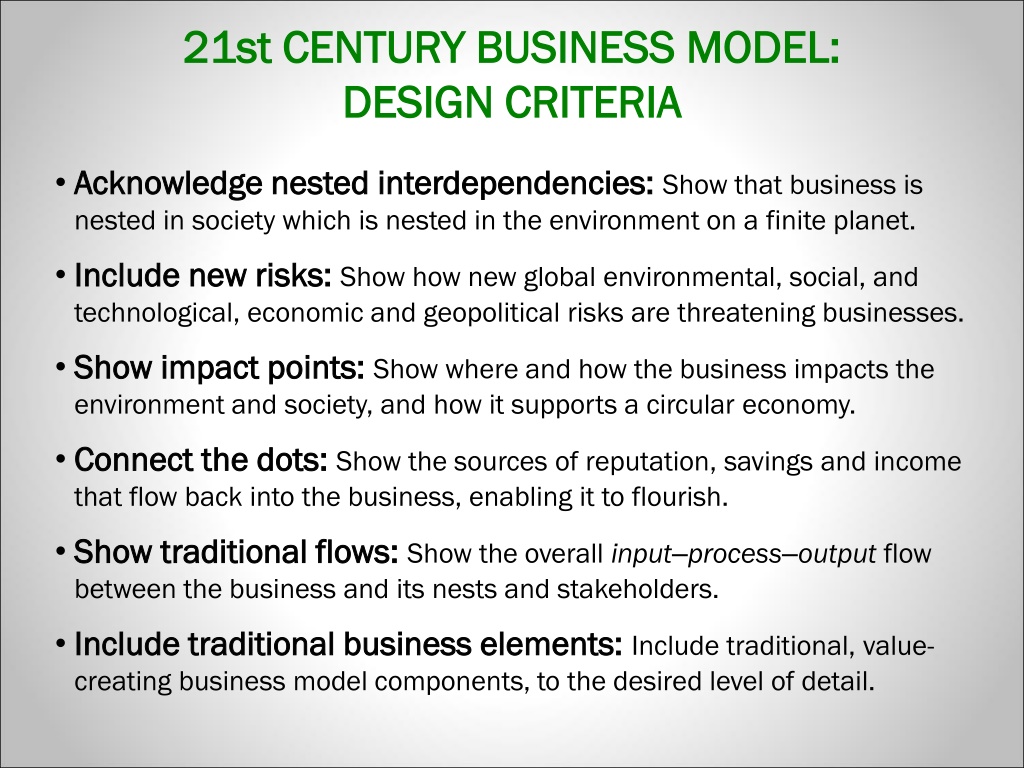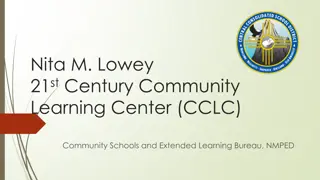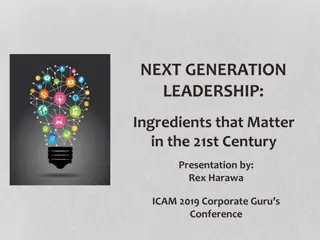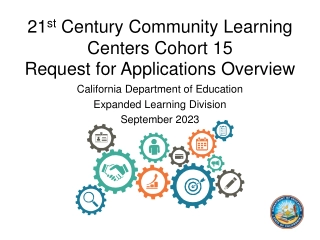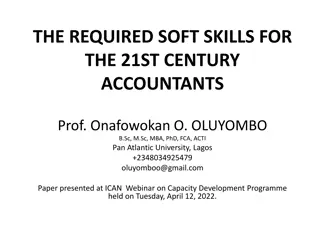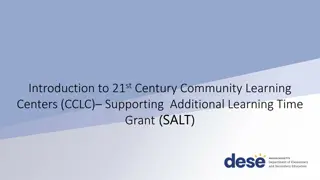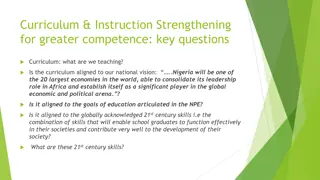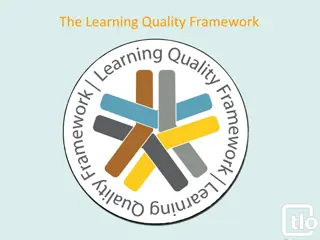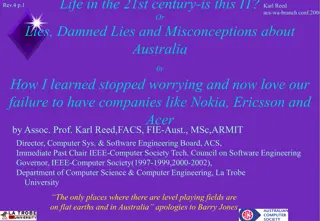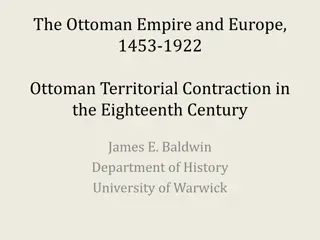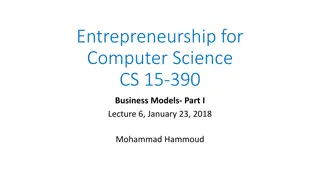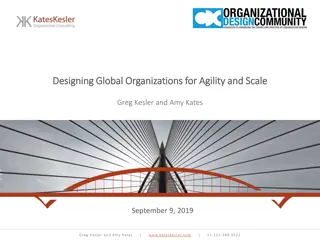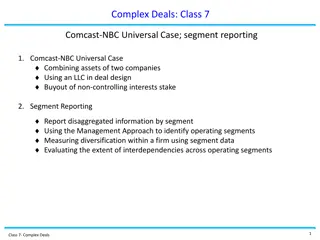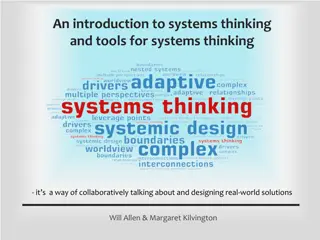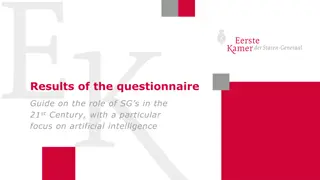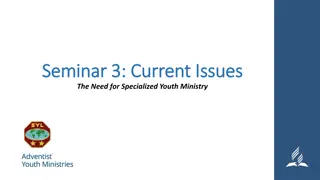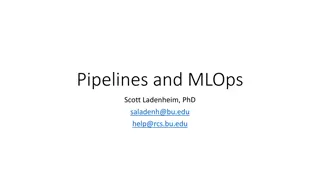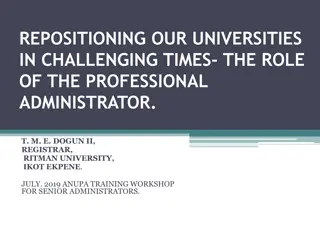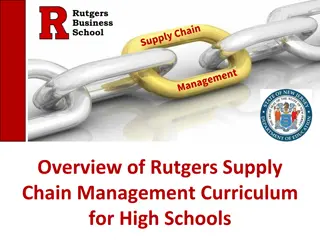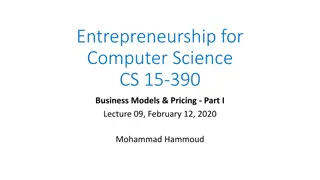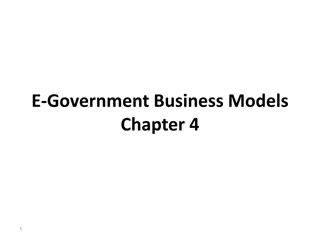Evolving Business Models in the 21st Century: Embracing Interdependencies
Business models in the 21st century are evolving to acknowledge nested interdependencies with society and the environment on a finite planet. New global risks and impact points are challenging businesses, highlighting the need for a shift towards a circular economy. The traditional business model components are being redefined to incorporate environmental, social, and technological factors, emphasizing reputation, savings, and income flows that support sustainable growth.
Download Presentation

Please find below an Image/Link to download the presentation.
The content on the website is provided AS IS for your information and personal use only. It may not be sold, licensed, or shared on other websites without obtaining consent from the author. Download presentation by click this link. If you encounter any issues during the download, it is possible that the publisher has removed the file from their server.
E N D
Presentation Transcript
21st CENTURY BUSINESS MODEL: 21st CENTURY BUSINESS MODEL: DESIGN CRITERIA DESIGN CRITERIA Acknowledge nested interdependencies: Acknowledge nested interdependencies: Show that business is nested in society which is nested in the environment on a finite planet. Include new risks: Include new risks: Show how new global environmental, social, and technological, economic and geopolitical risks are threatening businesses. Show impact points: Show impact points: Show where and how the business impacts the environment and society, and how it supports a circular economy. Connect the dots: Connect the dots: Show the sources of reputation, savings and income that flow back into the business, enabling it to flourish. Show traditional flows: Show traditional flows: Show the overall input process output flow between the business and its nests and stakeholders. Include traditional business elements: Include traditional business elements: Include traditional, value- creating business model components, to the desired level of detail.
TRADITIONAL BUSINESS MODEL TRADITIONAL BUSINESS MODEL BUSINESS Governance Governance Purpose / Vision / Mission / Policies / Strategies Human Resources People Customers Outputs Products & Services Activities & Processes Channels Inputs Loans & Investments Assets, liabilities & cash flow
21st CENTURY BUSINESS MODEL 21st CENTURY BUSINESS MODEL ENVIRONMENT 21st century environmental risks SOCIETY BUSINESS Community Impacts on Society Governance Governance Purpose / Vision / Mission / Policies / Strategies Other stakeholders Human Resources People Customers Outputs Products & Services Usage & end-of-life impacts Activities & Processes Impacts Channels Inputs Impacts on the Environment Loans & Investments Assets, liabilities & cash flow
21st CENTURY BUSINESS MODEL V2 21st CENTURY BUSINESS MODEL V2 ENVIRONMENT 21st century environmental risks SOCIETY BUSINESS Community Impacts on Society Governance Governance Purpose / Vision / Mission / Policies / Strategies Other stakeholders Social licence & other income Human Resources People Customers Reputation & revenue Reputation & savings Outputs Products & Services Usage & end-of-life impacts Activities & Processes Impacts Channels Inputs Reputation & savings Reputation & savings Impacts on the Environment Loans & Investments Reputation & savings Assets, liabilities & cash flow
BUSINESS MODEL BUSINESS MODEL CAPITALS VERSION CAPITALS VERSION NATURAL CAPITAL 21st century environmental risks SOCIAL CAPITAL BUSINESS Community Social & Social & Relationship Relationship Capital Capital Impacts on Society Governance Governance Purpose / Vision / Mission / Policies / Strategies Other stakeholders Social licence & other income Human Human Capital Capital People Customers Reputation & revenue Reputation & savings Outputs Products & Services Usage & end-of-life impacts Activities & Processes Impacts Channels Inputs Reputation & savings Reputation & savings Impacts on the Environment Financial, Intellectual & Financial, Intellectual & Manufactured Capitals Manufactured Capitals Loans & Investments Reputation & savings
CAPITALS BUSINESS MODEL CAPITALS BUSINESS MODEL - - EXAMPLE EXAMPLE NATURAL CAPITAL 21st century environmental risks SOCIAL CAPITAL Community SUSTAINABILITY ADVANTAGE Impacts on Social Capital Social & Relationship Capital Governance Purpose / Vision / Mission / Policies / Strategies Other Social licence & other income stakeholders Reputation & revenue Human Capital Contractors Bob Sustainability Champions Products & Services Products & Services People Talks Reputation & savings Usage & end-of-life impacts Events, web, stores, publisher Books Activities & Processes Activities & Processes Research & development Writing Communications Impacts Tools Utilities Books Supplies Natural Capital Reputation & savings Help Reputation & savings Impacts on Natural Capital Financial, Intellectual & Manufactured Capitals Reputation & savings Financial and Intellectual Capitals Based on Integrated Report 2017 for Sustainability Advantage sole proprietorship, sustainabilityadvantage.com/about/integrated-report/.
BUSINESS MODEL BUSINESS MODEL PERFORMANCE INFOGRAPHIC PERFORMANCE INFOGRAPHIC 98% 100% 99% 100% 89% 100% Based on Integrated Report 2017 for Sustainability Advantage sole proprietorship, sustainabilityadvantage.com/about/integrated-report/. Percentage scores indicate success protecting the value of the indicated capital, assessed using relevant Future-Fit Business Benchmark cause-no-harm goals.
